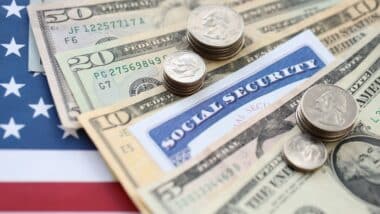Americans are facing a sharp rise in their cost of living, with the latest economic forecasts predicting an additional $2,376 in annual expenses by 2026 due to Donald Trump’s proposed tariffs.
A report from JG Wentworth reveals that many expect monthly outlays to increase by more than $190, especially with the imposition of new import taxes on goods from Europe, Mexico, and Canada.
While this anticipated surge in living costs may seem like a distant concern, experts suggest it could be even higher. The study also highlights that Americans have consistently underestimated other financial burdens, including the costs of car loans, mortgages, and everyday expenses like groceries and fuel.
Tariffs Set to Hit Everyday Products Hard
According to the report, specific consumer products are expected to bear the brunt of the tariff hikes. The Trump administration has announced that tariffs on goods from the European Union, Mexico, and Canada will result in substantial price increases across a wide range of items.
Alcohol, particularly wines and spirits, will see marked price hikes, with some import taxes potentially rising as high as 200%. Additionally, fresh produce, such as tomatoes and avocados, is expected to become more expensive as tariffs on imports from Canada and Mexico come into effect.
The effect on medical supplies is also concerning. The tariffs will likely raise the prices of essential medical equipment, such as pacemakers, syringes, and surgical tools, according to reports from the Financial Times.
The higher prices on medical products will add further strain on families already grappling with healthcare costs. Importers of electronics, including laptops, smartphones, and gaming consoles, are also bracing for price increases, with predictions suggesting that some products could rise by over 40%.
Economic Uncertainty Deepens as Tariffs Loom
The broader economic impact of these tariffs has already caused concern among financial analysts. In April 2025, the Bureau of Labor Statistics projected a 23.6% increase in the cost of consumer goods compared to 2020 levels, driven primarily by these new trade policies.
At the same time, global investment firms like JP Morgan have raised their predictions for an impending economic recession, increasing their chances from 40% to 60%.
Yale Budget Lab estimates that the tariffs could cost an average household an additional $4,900 each year.
As the US moves closer to implementing these tariffs in August 2025, the long-term effects on Americans’ wallets could be felt across every corner of the economy.









